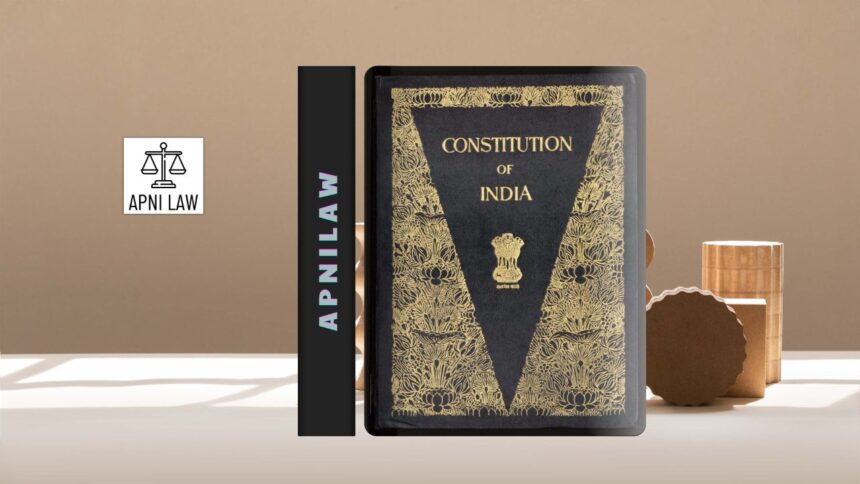Indian federalism has a unique character. It is not purely federal or purely unitary. Instead, it operates as a blend of both systems. Cooperative federalism is one of its most vital dimensions. This principle emphasizes that the Centre and the States must collaborate to govern effectively. They must work as partners rather than as rivals. Though the Constitution does not expressly use the phrase “cooperative federalism,” its spirit runs through many provisions and institutions.
The idea reflects India’s need to balance unity and diversity. In a country as vast and complex as India, effective governance cannot succeed without joint action. The Centre provides national direction, while the States bring local knowledge. Together, they aim to solve common problems and achieve development goals.
What Is the Concept of Cooperative Federalism?
Cooperative federalism in India refers to collaboration between the Centre, States, and even local governments. It promotes coordination, dialogue, and partnership. Instead of competing, the different levels of government share responsibilities. They work together in areas of planning, taxation, public health, disaster management, and development.
The framework has roots in constitutional design. The Seventh Schedule divides subjects into Union, State, and Concurrent Lists. But many subjects in practice require joint responsibility. For example, education, environment, and criminal law involve both central and state legislation. The Constitution also creates institutions to encourage cooperation. Article 263 provides for an Inter-State Council. Article 280 establishes the Finance Commission to recommend revenue sharing. More recently, the NITI Aayog has become a platform for policy coordination.
Thus, cooperative federalism does not mean surrender of autonomy. It means interdependence. States contribute their perspectives while the Centre ensures national goals. Together, they form a partnership model suited to Indian conditions.
How Does the Goods and Services Tax Reflect Cooperative Federalism?
The introduction of the Goods and Services Tax (GST) in 2017 marks the clearest example of cooperative federalism. Earlier, both the Centre and States had separate taxation powers. This created multiple indirect taxes and complex systems. GST brought these under one umbrella.
The GST Council embodies this spirit of cooperation. It consists of representatives from the Union and the States. All major decisions are taken through consensus or a special majority. Both levels of government ceded certain powers to create a unified tax system. The principle of “One Nation, One Tax” could not have been realized without cooperation. GST has shown that when the Union and States work together, they can create reforms that benefit the entire nation.
How Did the COVID-19 Pandemic Test Cooperative Federalism?
The COVID-19 pandemic provided another example. Health is primarily a state subject, but managing a pandemic required national coordination. The Centre announced lockdowns, vaccination policies, and containment guidelines. States implemented these measures according to local conditions.
There were challenges, including disagreements on restrictions and supply of oxygen. Yet, the crisis forced continuous dialogue between the Centre and States. The joint vaccination drive demonstrated how both levels could pool resources. Cooperative federalism helped India manage one of the largest crises in recent history.
How Do Inter-State Water Disputes Show the Need for Cooperation?
Water disputes between states often create tensions. Rivers like the Kaveri or Krishna flow across state boundaries. States fight over allocation of water. The Constitution provides mechanisms to resolve these conflicts through tribunals and councils.
These arrangements show that disputes cannot be solved by states acting alone. The Centre plays a role in setting up tribunals and ensuring compliance with awards. States must negotiate and cooperate. Water disputes highlight that natural resources in India often demand cooperative solutions.
What Role Does NITI Aayog Play?
The replacement of the Planning Commission by NITI Aayog signaled a new era of cooperative federalism. Unlike the centralized Planning Commission, NITI Aayog functions as a think tank and advisory body. Its Governing Council includes the Prime Minister, Chief Ministers, and Lieutenant Governors.
Through this platform, the Centre and States discuss policy issues. They deliberate on agriculture, infrastructure, health, and technology. NITI Aayog promotes alignment of national and state strategies while respecting regional diversity. It also provides technical support to states and encourages competitive as well as cooperative performance.
How Do All India Services Support Cooperative Federalism?
The All India Services, such as the IAS, IPS, and IFS, embody functional cooperation. Officers are recruited centrally but serve both Union and state administrations. This dual responsibility ensures uniform implementation of policies across the country. At the same time, officers gain local experience while representing national interests.
These services build bridges between the Union and States. They maintain administrative consistency while adapting to regional needs. This institutional arrangement strengthens cooperative federalism in day-to-day governance.
What Role Do Zonal Councils and Inter-State Councils Play?
The Constitution and laws create forums for consultation. Article 263 allows the President to establish an Inter-State Council. This body promotes coordination and resolves disputes. Similarly, Zonal Councils created under the States Reorganisation Act bring together states of a particular zone with the Union Home Minister as chairperson.
These councils encourage dialogue on security, infrastructure, trade, and social policies. They prevent conflicts from escalating by providing a platform for discussion. By promoting dialogue, they reinforce the cooperative federalism model.
What Are the Key Constitutional Provisions That Support Cooperative Federalism?
Several constitutional provisions lay the foundation for cooperation. The Seventh Schedule divides powers but also places many subjects in the Concurrent List where both Union and States can legislate. Article 263 provides for the Inter-State Council to encourage collaboration. Article 280 establishes the Finance Commission, which ensures fair revenue sharing. Zonal Councils and institutions like NITI Aayog further deepen cooperation.
These provisions show that while the Constitution creates division of powers, it also encourages integration. The system relies on consultation and consensus to make policies effective.
Why Is Cooperative Federalism Important for India?
India’s diversity requires both unity and decentralization. Without cooperation, governance would suffer. For example, economic planning requires coordination of central and state resources. Disaster management needs both central funds and state machinery. Policies on health, education, and environment succeed only when both levels of government act together.
Cooperative federalism also prevents excessive centralization. By including states in decision-making, it gives them ownership of national policies. At the same time, it prevents fragmentation by ensuring the Centre maintains overall direction. This balance helps India manage its scale and complexity.
What Challenges Does Cooperative Federalism Face?
Despite its importance, cooperative federalism faces many hurdles. States often complain about central dominance. The Centre sometimes uses financial power or legislation on concurrent subjects to override state preferences. The role of Governors has also created tensions. Disputes arise when Governors act as representatives of the Centre rather than neutral heads of states.
Fiscal federalism is another area of concern. States demand greater autonomy in revenue generation. The GST regime, while cooperative, has also sparked disputes about compensation payments. Some states argue that central decisions on taxation reduce their independence. These issues highlight the fragile nature of cooperation.
How Does Cooperative Federalism Evolve in Practice?
Cooperative federalism in India is not static. It evolves with political, social, and economic developments. The rise of regional parties has strengthened the voice of states in national politics. Coalition governments at the Centre have encouraged negotiation and partnership. Institutions like NITI Aayog have replaced earlier centralized models.
Judicial decisions also play a role. The Supreme Court has emphasized the need for cooperative federalism in judgments on GST, fiscal sharing, and Centre-State disputes. These developments show that the idea is both constitutional and practical, shaped by changing circumstances.
For any specific query call at +91 – 8569843472
Conclusion
Cooperative federalism in India represents a partnership model of governance. It reflects collaboration between the Union, States, and local governments. Examples like GST, pandemic management, water disputes, NITI Aayog, and All India Services highlight its working. The Constitution provides mechanisms such as the Finance Commission, Inter-State Council, and Zonal Councils to strengthen this spirit.








